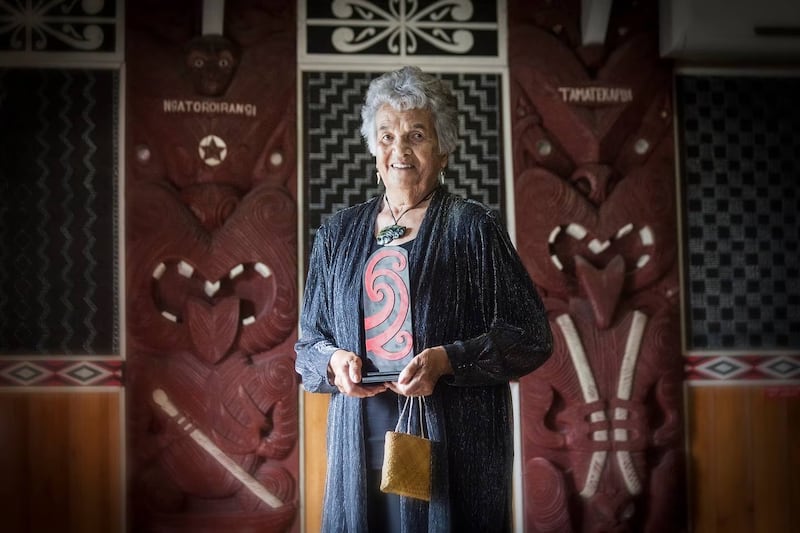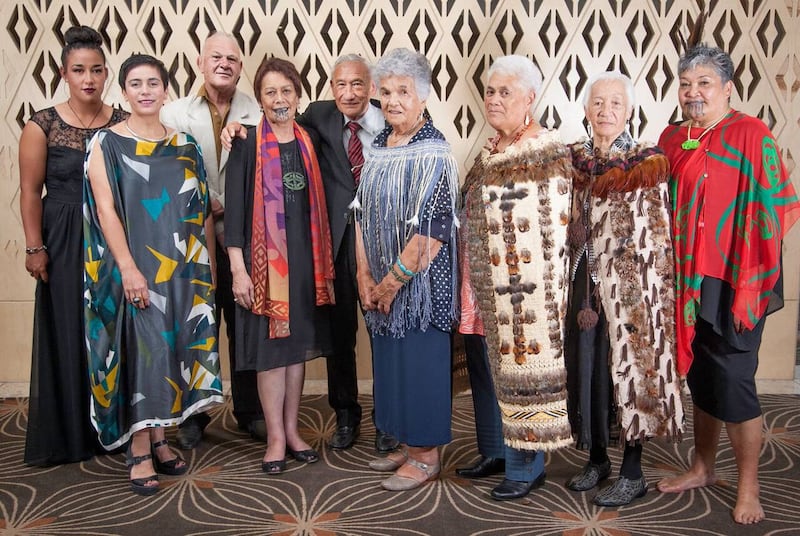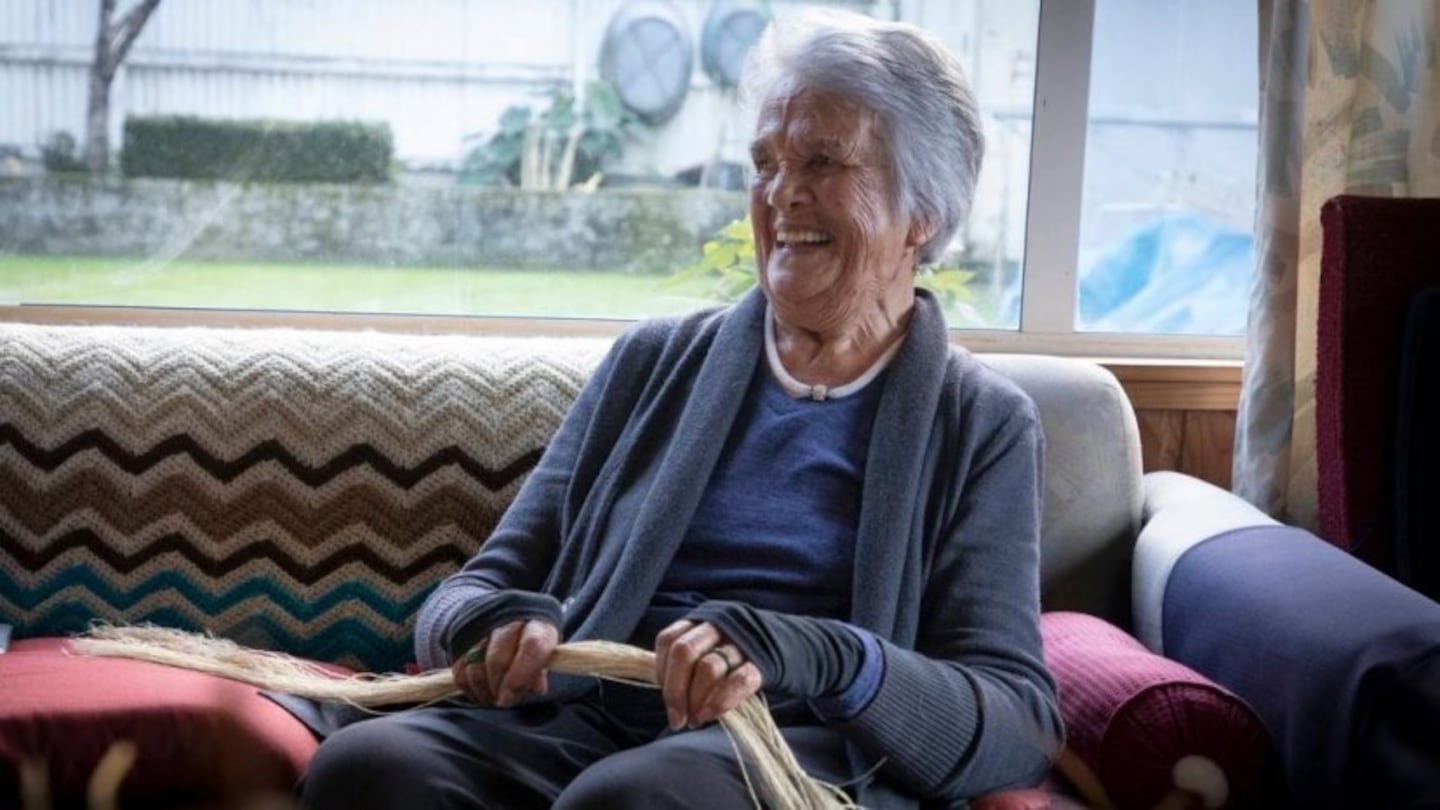Matekino Lawless has been named as an Officer of the New Zealand Order of Merit. Photo / Andrew Warner
When Matekino Lawless’ daughters sat her down and told her she was being honoured by King Charles for her services to Māori art, a rich tapestry of memories flashed through the 95-year-old weaver’s mind.
“I thought, ‘What have I done to receive something like this?’” Lawless (Ngāti Maniapoto, Ngāti Ruakawa, Tainui) told the Rotorua Daily Post.
“Not once in my life have I ever thought that anything as wonderful as this would happen to me.
“I was overwhelmed really. I didn’t know what to say.”
If she accepted the award, Lawless, of Ngāti Maniapoto, Ngāti Ruakawa and Tainui, would be made an Officer of the New Zealand Order of Merit and listed as one of 2023′s recipients of the King’s Birthday and Coronation Honours.
“Well, you don’t refuse something like that. Such an important honour isn’t something that you can brush aside,” Lawless said.
“I thought of all the people who had instilled happiness in my life. I was fortunate. I grew up with kuia around me and they were all weavers.”
With tears in her eyes, Lawless nodded her head.
“I accepted it for my children, that they be proud of their mother when she’s not around.”
Becoming an Officer of the New Zealand Order of Merit was the latest in a long list of accomplishments for Lawless.
In 2015, the artist received Creative New Zealand’s Te Waka Toi Supreme Award. She also received the Toi Iho Te Ara Whakerei Distinguished Lifetime Award in 2002 and the Queen’s Service Medal for Public Services in the 1999 New Year’s Honours.
Lawless was a member of Te Roopu Raranga Whatu o Aotearoa National Māori Weavers collective until 2006 and had since been a founding member of Te Kāhui Whiritoi, an advisory group of senior distinguished raranga artists.
Her first solo exhibition, “Whatu Manawa”, opened at the Tauranga Art Gallery and toured nationally from 2018 to 2021.
Lawless also contributed to a tukutuku panel installation at the United Nations Headquarters in 2015.
As of 2023, she has been weaving for more than 60 years and has continued to exhibit and share knowledge nationally and internationally.
But Lawless’ most precious project was completed closer to home.
“I think it would be my first kōrowai [cloak],” Lawless said.
“I put it together after days, weeks and months of going through the process of learning the knowledge of the harakeke bush from the extraction and preparation of the fibre to the weaving.”

Lawless said she had always wanted to create a kōrowai. Then one day at an event for the organisation then known as Waiariki Institute of Technology, kaumātua Arapeta Tahana asked Lawless if she would make a kōrowai for him.
“Arapeta Tahana lived just along the way from us and I knew him well. I knew his family from way back and all his relatives lived here in Rotoiti and I grew up with some of them,” Lawless said.
“I couldn’t say no. So I said, ‘Okay, leave it to me.’”
Lawless said she remembered not having feathers for the project.
“In the end, I was able to get feathers from the Department of Conservation,” Lawless said.
“I was given all these frozen pukeko carcases and we managed to take all the feathers off them so that I could put the piece together.”
Lawless said weaving was about the wairua, the spirit.
“I extract the fibre from the raw blade. Then I have to twist, to miro, on each knee each of those to be able to start.”

Matekino Lawless (centre) standing among other Te Waka Toi award winners in 2015. Photo / Andrew Warner
Lawless said she often thought of the occasion where she presented Tahana and his family with the kōrowai. It was a Sunday.
“He hadn’t seen it before,” Lawless said.
“We organised for our priest to bless it before it was given to him. That would be the most precious thing to me that I have put together.”
Tahana has since died but Lawless said his three daughters had all worn their father’s kōrowai.
“Whenever I see it, there’s a lovely wairua about it.”
Lawless said it was important for her people to continue to learn the art of weaving.
“Always remember, it all started with the flax bush,” Lawless said.
“We need to learn all that goes with that flax bush. There’s a lot of knowledge that comes from weaving with natural materials. To know how to prepare right from the root of the flax is to learn about our ancestors.
“You learn nothing if you just put it together.”
Lawless said was glad to see “lots of young ones” coming through and doing wonderful weaving work, being able to feel the wairua in the activity.
“It is wonderful to see that. I can see when a young lass is putting all her need to learn into it. I can tell when she’s got it too.
“I hope natural fibres never get put aside in the generations to come.”


